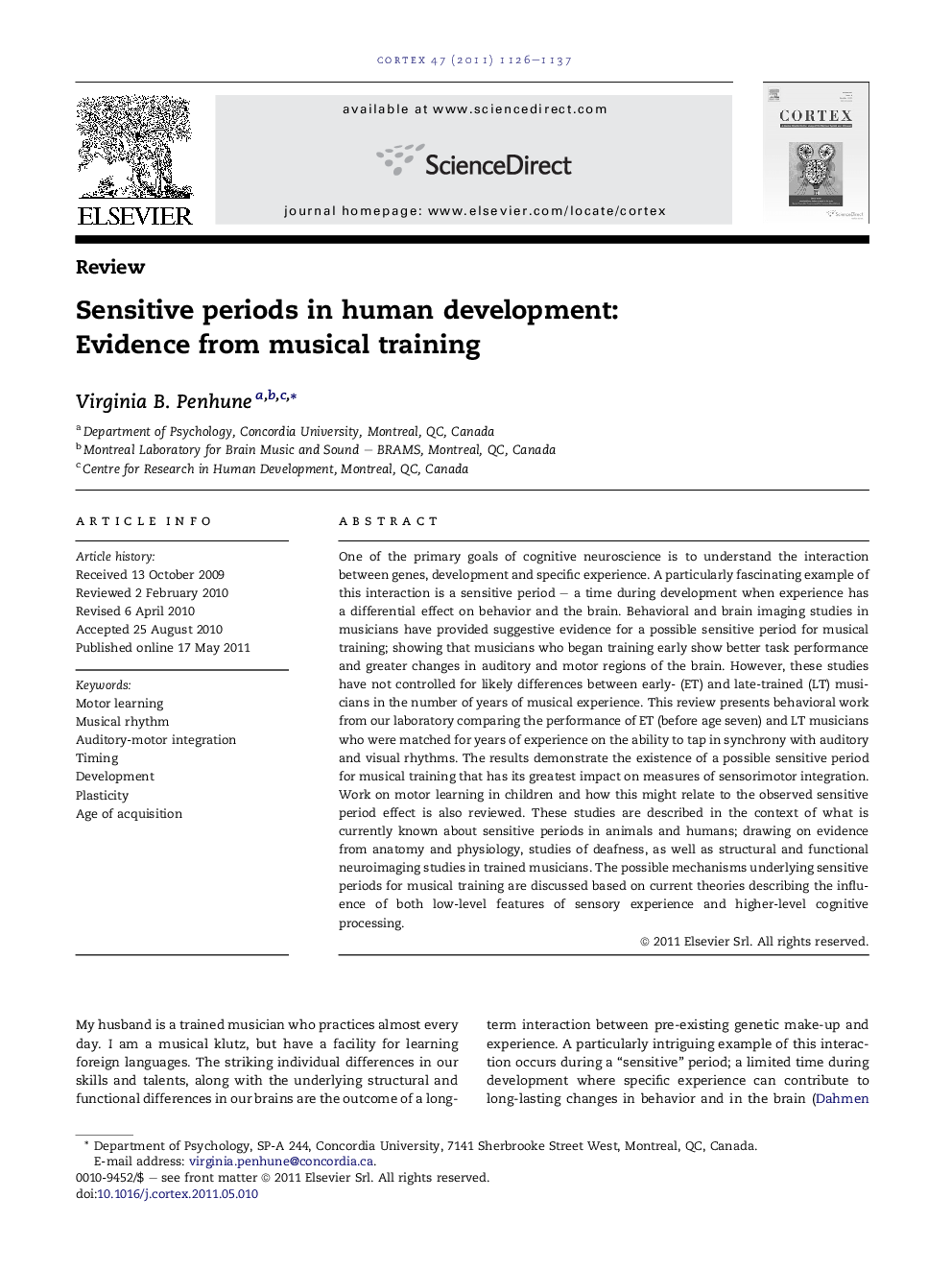| Article ID | Journal | Published Year | Pages | File Type |
|---|---|---|---|---|
| 942371 | Cortex | 2011 | 12 Pages |
One of the primary goals of cognitive neuroscience is to understand the interaction between genes, development and specific experience. A particularly fascinating example of this interaction is a sensitive period – a time during development when experience has a differential effect on behavior and the brain. Behavioral and brain imaging studies in musicians have provided suggestive evidence for a possible sensitive period for musical training; showing that musicians who began training early show better task performance and greater changes in auditory and motor regions of the brain. However, these studies have not controlled for likely differences between early- (ET) and late-trained (LT) musicians in the number of years of musical experience. This review presents behavioral work from our laboratory comparing the performance of ET (before age seven) and LT musicians who were matched for years of experience on the ability to tap in synchrony with auditory and visual rhythms. The results demonstrate the existence of a possible sensitive period for musical training that has its greatest impact on measures of sensorimotor integration. Work on motor learning in children and how this might relate to the observed sensitive period effect is also reviewed. These studies are described in the context of what is currently known about sensitive periods in animals and humans; drawing on evidence from anatomy and physiology, studies of deafness, as well as structural and functional neuroimaging studies in trained musicians. The possible mechanisms underlying sensitive periods for musical training are discussed based on current theories describing the influence of both low-level features of sensory experience and higher-level cognitive processing.
